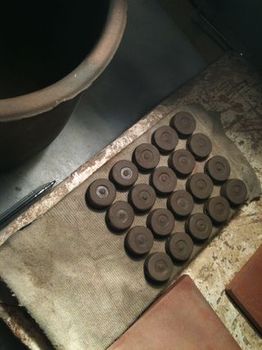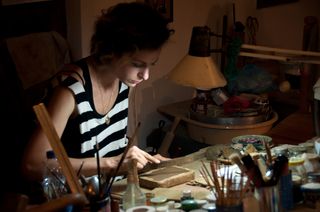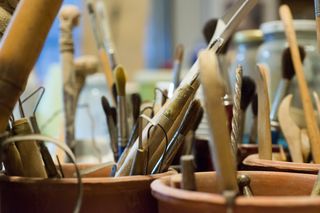 |
Clay is a fine-grained natural rock or soil material that combines one or more clay minerals with traces of metal oxides and organic matter.
In pottery there are many different kinds of clay. Earthenware, which I use mostly, is glazed or unglazed nonvitreous pottery which has normally been fired below 1200°C. Porcelain, bone china and stoneware, all fired at high enough temperatures to vitrify, are the main other important types of pottery clay.
I also use ceramic glaze which is an impervious layer or coating of a vitreous substance which is fused to the ceramic body through firing. Glaze can serve to color, decorate or waterproof an item. Glazing renders earthenware vessels suitable for holding liquids, sealing the inherent porosity of unglazed biscuit earthenware. It also gives a tougher surface. Glaze is also used on stoneware and porcelain. In addition to their functionality, glazes can form a variety of surface finishes, including degrees of glossy or matte finish and color. I fire my glazes mainly around 1000°C - 1100°C
I also use liquid gold which has dissolved metals (14k gold) as its essential component. It is mainly applied by brush and is always applied to already fired and glazed objects.
|
  |
|